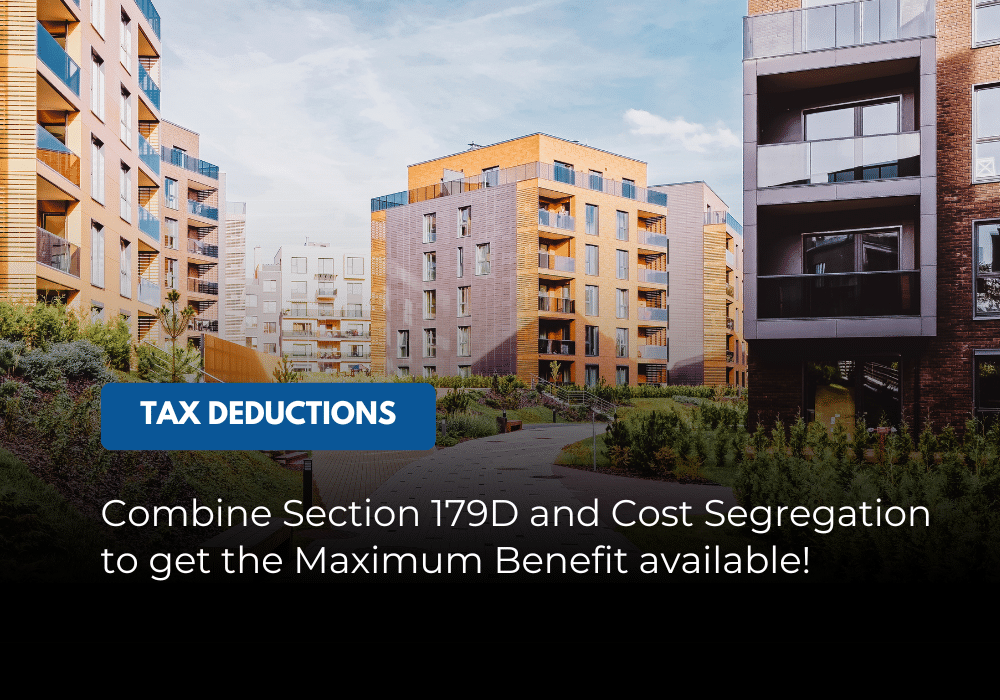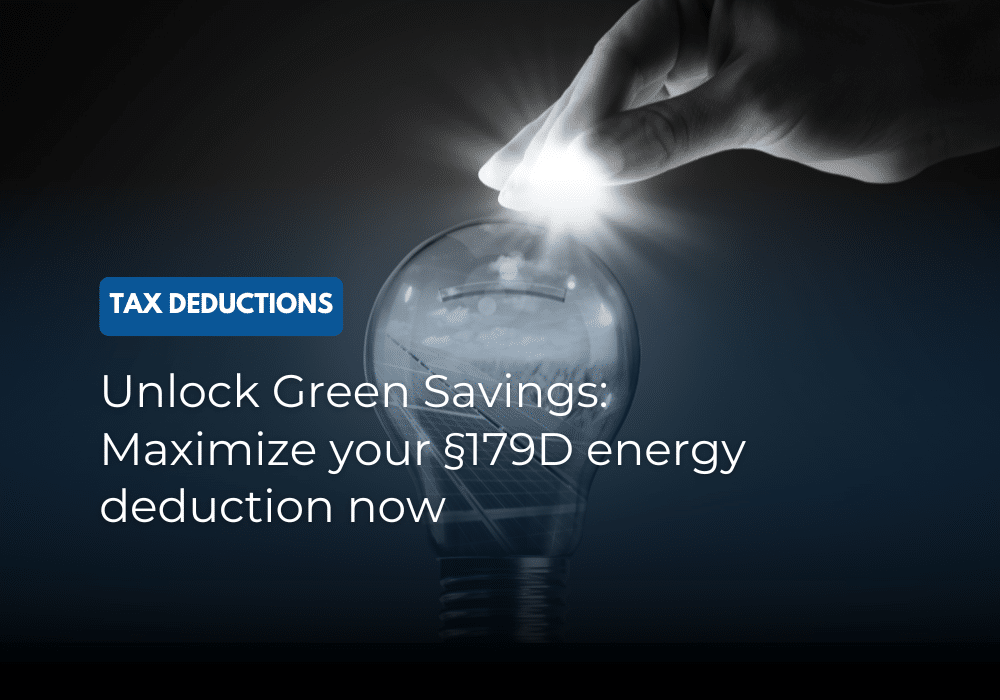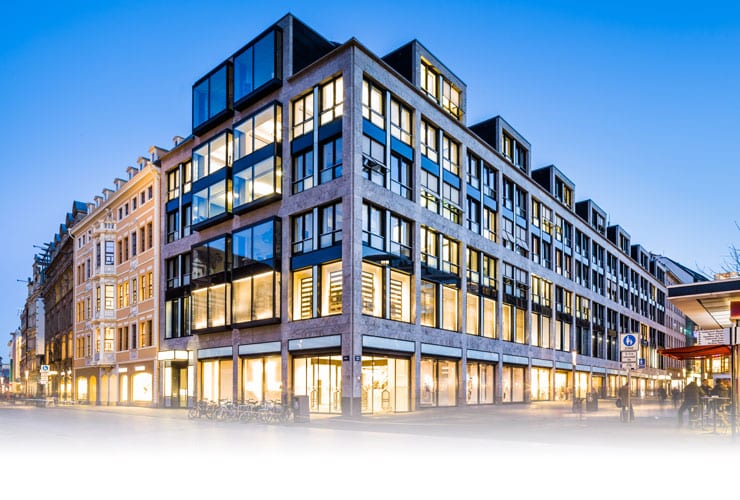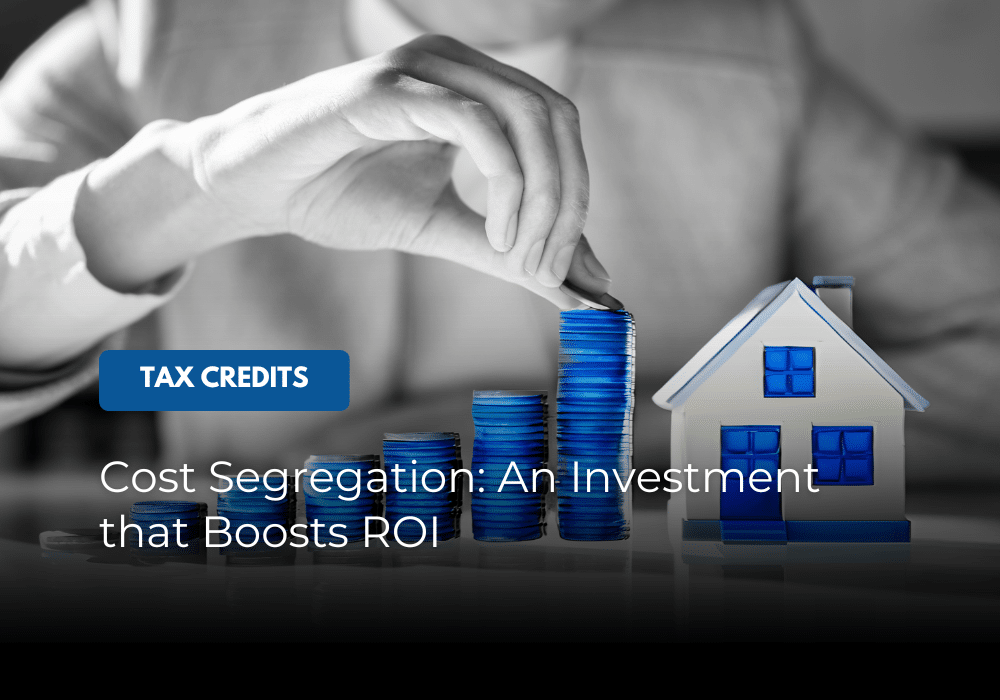Understanding and leveraging specific tax incentives can lead to significant financial benefits for commercial property owners and real estate developers. This includes those who own and manage apartment complexes, office complexes, and warehouses. It applies to many commercial properties except low-rise residential buildings (three stories or under).
The combination of cost segregation with the Section 179D Energy Efficient Commercial Buildings Deduction presents a chance for commercial property owners to optimize their tax deductions while also promoting eco-friendly practices.
Key Takeaways
- Leveraging Section 179D deductions through a detailed cost segregation study offers commercial building owners a powerful tool for maximizing tax savings.
- Property owners can significantly reduce their tax liabilities by identifying and reclassifying assets and incorporating energy-efficient systems while contributing to a more sustainable future.
- Exploring these tax incentives can lead to substantial financial rewards for those considering new construction or retrofitting projects and even those with completed projects dating back to 2006.
Section 179D and Cost Segregation
Internal Revenue Code Section 179D allows for tax deductions on energy-efficient commercial properties. It encourages building owners to adopt energy-efficient systems in their new constructions or retrofit existing structures. The deduction can be substantial, offering up to $5.65 per square foot for buildings that as of 2024.
On the other hand, cost segregation is a tax strategy that identifies and reclassifies assets within a commercial property. Owners can accelerate depreciation deductions by breaking down the property into individual components and reassigning them to shorter depreciation lives, resulting in immediate tax savings. When used in conjunction with Section 179D, cost segregation can further enhance these savings by identifying qualifying energy-efficient improvements.
Combining Segregation and Section 179D
A detailed cost segregation study can play a crucial role in maximizing the benefits of the Section 179D deduction. The study meticulously analyzes a building’s components, identifying assets that qualify for accelerated depreciation and those that meet the energy efficiency criteria set by Section 179D. This dual approach streamlines the certification process and ensures property owners capitalize on all available tax incentives.
Eligibility and Qualifying Improvements
Improvements must enhance a building’s energy efficiency to qualify for the Section 179D deduction. Eligible projects include installing energy-efficient lighting systems, HVAC systems, and building envelope components. These improvements must be certified to reduce the building’s total annual energy and power costs by a specific percentage compared to a reference building based on ASHRAE 90.1-2007 Appendix G, Performance Rating Method requirements.
179D projects completed as far back as 2006 may still qualify for the deduction, with the greatest value often found in work completed within the last five years. This retroactive application offers a unique opportunity for property owners who have already invested in energy-efficient upgrades to claim significant tax savings.
The Impact on Real Estate Development and Retrofitting Projects
Incorporating energy-efficient systems into new constructions or retrofit projects can lead to substantial tax savings under Section 179D for real estate developers and property owners. Planning these systems in conjunction with a cost segregation study enhances overall tax efficiency, making it a strategic move for any project.
Our Unique Approach
Cost Segregation Authority’s technical approach to identifying and reclassifying assets makes combining a cost segregation study with the Section 179D deduction easier. Our level of detail and technical analysis is unique, as much of the information required for 179D certification is already collected during the cost segregation study. This streamlined process minimizes additional data collection and maximizes the tax benefits.
Navigating the Certification Process
Navigating the certification process for Section 179D can be complex, but it becomes manageable with the support of a specialized cost segregation firm. Our team provides the required detailed energy and cost analysis, ensuring that all necessary documentation is in place for claiming the deduction. This comprehensive approach simplifies the certification process and maximizes the tax benefits for building owners.
Maximize your tax savings and enhance your building’s energy efficiency by leveraging the power of Section 179D and cost segregation. Contact us today to learn how we can support your next project.


















